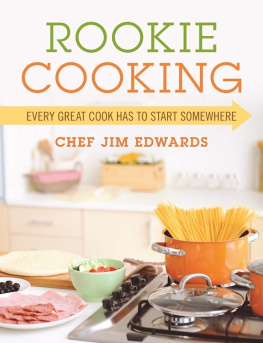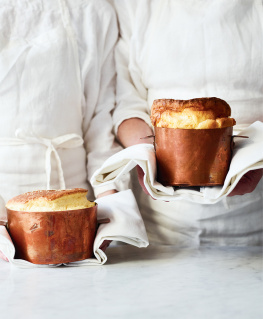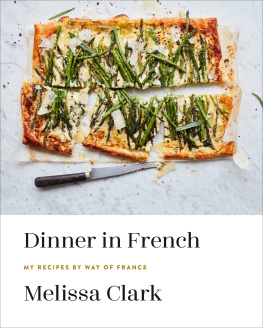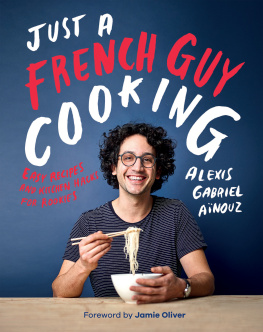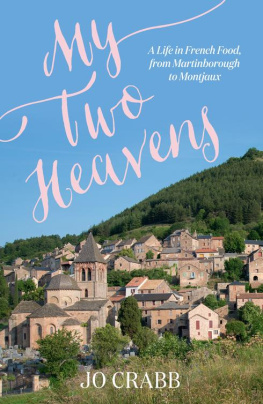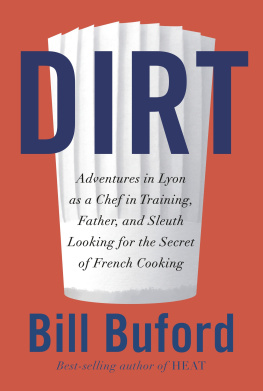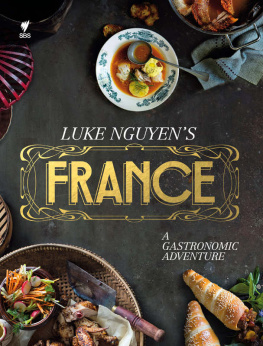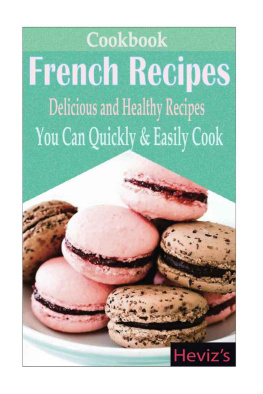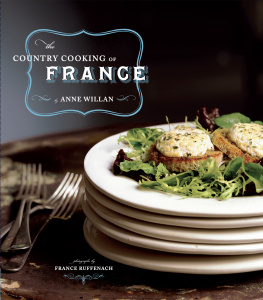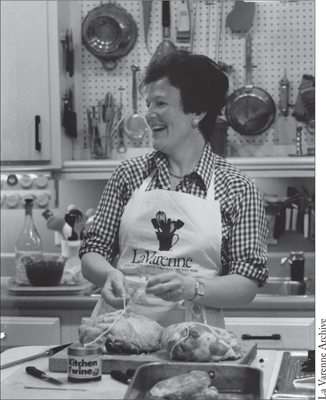

The author and publisher have provided this e-book to you for your personal use only. You may not make this e-book publicly available in any way. Copyright infringement is against the law. If you believe the copy of this e-book you are reading infringes on the authors copyright, please notify the publisher at: us.macmillanusa.com/piracy.
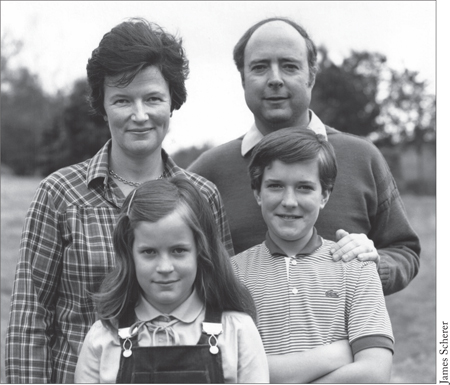
This book is for my dearest husband, Mark Cherniavsky, and our two children, Simon and Emma. May they, and their children and their childrens children, prosper long and happily.
Contents
R ECIPES:
R ECIPES:
R ECIPES:
R ECIPES:
R ECIPES:
R ECIPES:
R ECIPES:
R ECIPES:
R ECIPES:
R ECIPES:
R ECIPES:
R ECIPES:
R ECIPES:
R ECIPES:
R ECIPES:
R ECIPES:
Acknowledgments
This book would not have been possible without Amy Friedman, who has become my second voice and a close friend who knows more about me than I do myself.
Warmest thanks to:
Emma, my daughter, who first suggested the project.
Elizabeth Beier, my outstanding editor at St. Martins Press, who took a bet that One Souffl at a Time would rise high.
Lisa Ekus, my agent, whose warmth and wise counsel brought us all so close.
Jenn Garbee, who worked on our book proposal and found the title.
Todd Schulkin, tireless advisor, manager, and on-the-spot editor, who also happens to be my son-in-law.
Elizabeth Weinstein, whose editorial insights kept us on the right track.
Susan Broussard, who, with Nicole Quessenberry and Angel Liu, tested the recipes.
And to editor Jim Burns, longtime friend who pulled the final recipes into shape.
Things Ive Smuggled in My Suitcase
Ginger biscuits for a midnight feast at my boarding school
Exotic fruits and vegetables from Manaus on the Amazon, confiscated in Miami
Fresh truffles for Julia Child, packed with camphor balls to distract sniffer dogs
American bacon for the French chefs at La Varenneso much crispier, they said
Trunks of American flour to France for testing recipes
French Mars bars to the United States for the best hot chocolate sauce for the children
Christmas gingerbread houses from America to France; if the roof collapses it still tastes the same
Ypocras, a medieval spiced wine, labeled Spiced Vinegar so it can cross the state line
A vinegar mother from Italy for our U.S. kitchen

At La Varenne in the early days, Chef Michel Marolleau and I worked hard together.
Chapter One
UPSTAIRS IN PARIS
If you cant stand the heat, get out of the kitchen.
Harry S. Truman
On a chilly November morning I rushed out of our apartment overlooking the Eiffel Tower. Just a few months earlier, in the summer of 1975, my husband, Mark, and I, with our two small children, Simon and Emma, had moved to Paris. Id already taken this twenty-minute walk dozens of times, a straight path east along the Rue Saint Dominique, on my way to my cookery school that was, after years of planning, nearly ready to open. This was the day Craig Claiborne, the renowned restaurant critic of The New York Times and the most important fixture on the American food scene, was coming to see the school. That he was coming at all was a great compliment, but a mention in The Times could make all the difference, since his words could make or break our reputation.
I hurried past top-class food storesa poulterer and several bakeries. I had already picked out my caf, the place I stopped every morning to drink a caf crme and read the Herald Tribune; from the first day the server knew my order without asking. But that day I didnt stop. I swept past commanding historic buildings and across the gray gravel then fronting Les Invalides, the vast complex of military-themed museums and Napolons tomb. I spotted our sign painted in crisp black letters on a cream background: LA VARENNE COLE DE CUISINE and felt a shiver of pride at the sight of it and of our window boxes with their cheerful geraniums.
Keeper of the keys, I climbed the back stairs and turned the ancient, crabby lock, releasing the heavy sidewalk door, which surely dated from the 1930s. Our French business partner and landlord, Sofitel, had helped us find this old bistro beside one of their hotels in the heart of Paris. Finding the right place had not been easy. Restaurants in Paris were doing very well, and French law demanded that any premises in which there would be cooking had to have a restaurant license. But this 150-year-old building with its stone-vaulted cellar naturally insulated for a chambre froide, a walk-in cold room with meat hooks, was just right. By that day in November we had spent months remodelingone classroom on the ground floor for the morning hands-on practical classes, with another upstairs to double as a practical kitchen and a space for afternoon demonstrations that would, like the cinema, welcome drop-ins. Now I hoped to lure some students.
Our chef, Michel Marolleau, arrived at nine on the dot. Marolleau had been recommended by Sofitel and was the image of what Id imagined as the La Varenne chef with his good looks, neatly combed hair, and pencil-perfect moustache. He was youngjust twenty-nine to my thirty-seven. Although he had not one word of English, he did have solid cooking experience. That morning as he changed into his starched chefs whites in the cubbyhole behind the upstairs office, I busied myself with last-minute preparations. I noticed the loose telephone wires still about but consoled myself that at least the main demonstration bench and crucial overhead mirror lined with Mylar reflecting plastic were installed. I smiled up at that mirror, envisioning a showman chef who might flamb with too much enthusiasm and scorch a hole in the Mylarand later did just that.
All that summer and into fall had been a flurry of activity, but I was fortunate to have the support not only of the family but also of so many lights of the food world. Simone Beckbetter known as Simca and Julia Childs co-authorhad gone with me to the frenetic Salon des Arts Mnagers, where I purchased equipment for the school. Simcas energy was astounding; in her toy-sized car, also called a Simca, she drove me around the Place de ltoile never looking left or right. Armed with her wisdom and keen eye, I decided on appliances that combined economy with toughness. We could not afford the robust German makes, let alone anything American, which was the wrong image anyway. My mission was to teach real French cooking, but so many of the French appliances were of poor quality, so we finally decided on the French-made Arthur Martin as a good compromise. At the school the utilitarian brown floor was shiny clean. The sight of the curtains I had made myself from the expensive chintz fabric printed with herbs, an opening gift from my mother, gave me a rush of pride. Id wanted to add a touch of hominess to temper all that cold stainless steel of the bench and ovens.
I had spent many days preparing for this particular morning. At my request, Chef Marolleau had made his signature apple tart and chewy almond cookies called financiers because they are the color and shape of gold bars. Id also instructed him to be prepared to serve lunch, though I couldnt be certain Craig would stay. I fussed over every detail, lastly my clothes, the flared black wool skirt my mother had bought for me on Rue du Faubourg Saint-Honor and my favorite red-patterned shirt. My mother had insisted I dress well for such an occasionso much was at stake.



